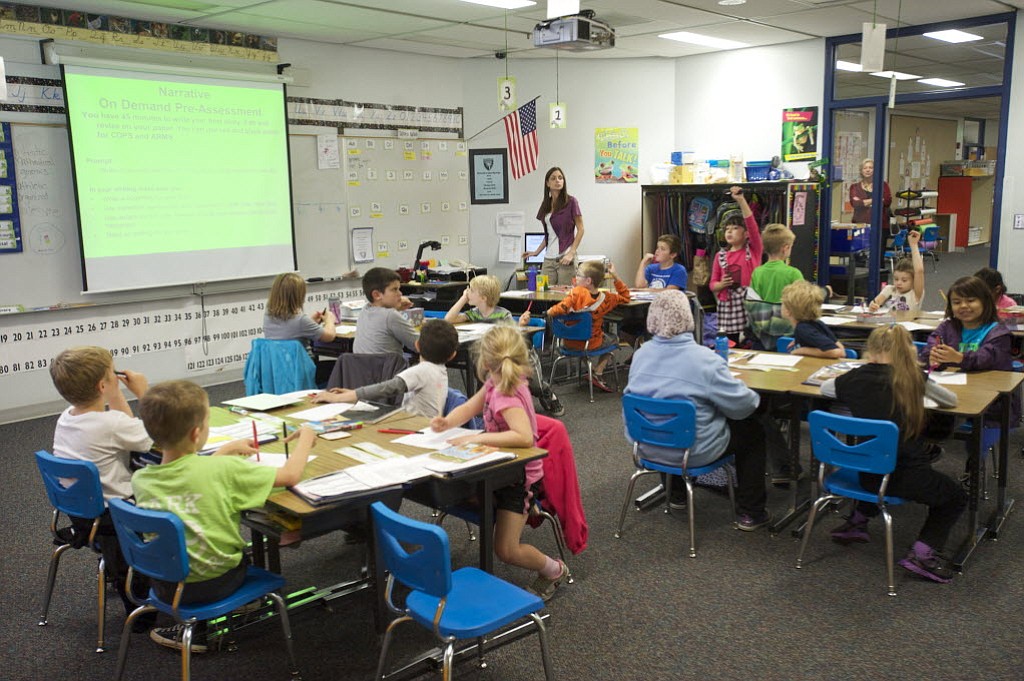With less than a week before Election Day, the initiative to reduce class sizes in Washington seems poised to pass.
In stark contrast to the two dueling gun measures on the Nov. 4 ballot, Initiative 1351 has no organized opposition campaign.
“You have a lot of very influential, very smart people who have come out and opposed this,” said Jami Lund, a senior policy analyst with the Freedom Foundation, which is behind a grass-roots effort to defeat the measure.
But there aren’t many people willing to “run in front of the freight train and say, ‘I want large class sizes,’ ” Lund said. “There’s no political action committee, no funds being raised or money spent to win this election for the ‘no’ side. … Nobody has an interest to write a check to stop it from happening.”
The campaign’s proponents are predominantly state and national education unions. The Vancouver Education Association pitched in $2,000, and overall the campaign has raised more than $4 million.
Those who oppose the measure are faced with a bit of a predicament.
“Who would be against smaller class sizes? The answer, is … very few people,” Carolyn Long, a political science professor at Washington State University Vancouver, wrote in an email. “Most understand that student-teacher ratio has a great deal to do with student success. The trickier question is, ‘How do we pay for it?’ ”
If approved by voters, the measure would increase state expenditures by an estimated $4.7 billion through 2019, according to the state’s Office of Fiscal Management. The Legislature would have to cut programs or raise taxes to satisfy the measure’s requirements.
Evergreen Public Schools Superintendent John Deeder estimated the district would need to build 10 to 12 new schools to meet the requirements; local taxpayers would likely be on the hook to pay the tab.
It’s not uncommon for voters to approve ballot measures without a clear source of funding identified.
In Oregon, “voters passed initiatives on crime measures which sounded great in principle, but which cost the state a considerable amount,” Long wrote.
In Washington this session, lawmakers will also be tasked with adequately funding the state’s public schools to satisfy the state Supreme Court’s ruling in the McCleary case. If I-1351 passes, the upcoming budget-writing session could prove even more difficult.
Vancouver Public Schools Superintendent Steve Webb is supportive of the measure. Proponents have pointed to statistics that show Washington has some of the most overcrowded classes in the nation.
One of the key goals of the initiative is to give teachers the chance to provide more individualized instruction and “provide timely feedback to students and families, and keep students actively engaged in learning activities,” the measure reads.
To accomplish those goals, the measure would reduce class sizes for all grades, kindergarten through 12. The measure is projected to create thousands of new jobs, ranging from teachers to administrators.
According to a survey conducted earlier this month by independent pollster Stuart Elway, the measure was leading by nearly 3 to 1.
There was one “silver lining” revealed by the poll, Lund said.
“The more attention voters have paid, the less likely they are to support I-1351,” according to the poll.




